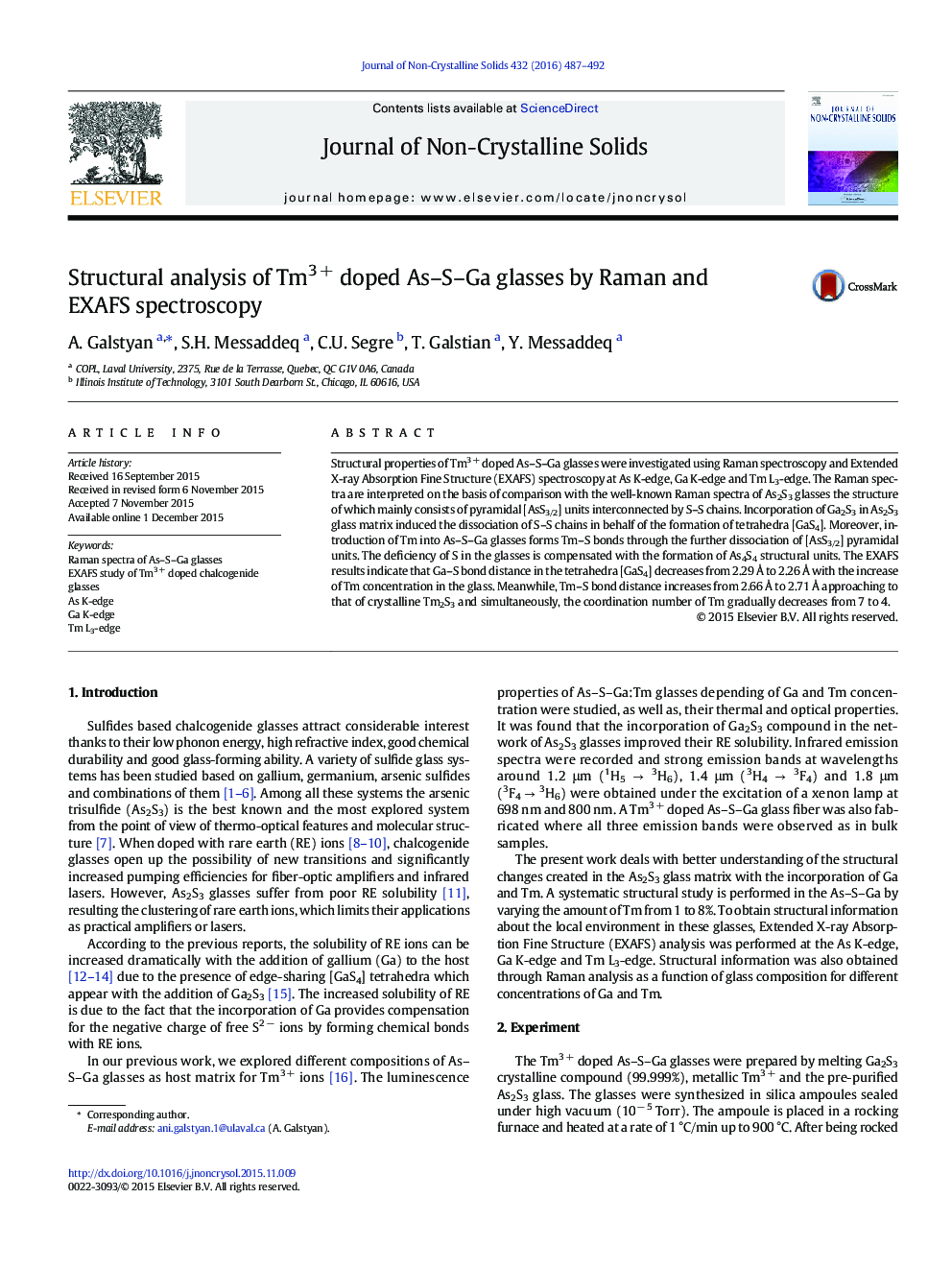| Article ID | Journal | Published Year | Pages | File Type |
|---|---|---|---|---|
| 1480443 | Journal of Non-Crystalline Solids | 2016 | 6 Pages |
•Mechanisms responsible for the solubility of Tm ions in As2S3 glass with the incorporation of Ga were investigated•Structural modification of Tm3 + doped As2S3 glasses with the incorporation of Ga was investigated•The changes in the local environment of Tm depending on its concentration were explored
Structural properties of Tm3 + doped As–S–Ga glasses were investigated using Raman spectroscopy and Extended X-ray Absorption Fine Structure (EXAFS) spectroscopy at As K-edge, Ga K-edge and Tm L3-edge. The Raman spectra are interpreted on the basis of comparison with the well-known Raman spectra of As2S3 glasses the structure of which mainly consists of pyramidal [AsS3/2] units interconnected by S–S chains. Incorporation of Ga2S3 in As2S3 glass matrix induced the dissociation of S–S chains in behalf of the formation of tetrahedra [GaS4]. Moreover, introduction of Tm into As–S–Ga glasses forms Tm–S bonds through the further dissociation of [AsS3/2] pyramidal units. The deficiency of S in the glasses is compensated with the formation of As4S4 structural units. The EXAFS results indicate that Ga–S bond distance in the tetrahedra [GaS4] decreases from 2.29 Å to 2.26 Å with the increase of Tm concentration in the glass. Meanwhile, Tm–S bond distance increases from 2.66 Å to 2.71 Å approaching to that of crystalline Tm2S3 and simultaneously, the coordination number of Tm gradually decreases from 7 to 4.
